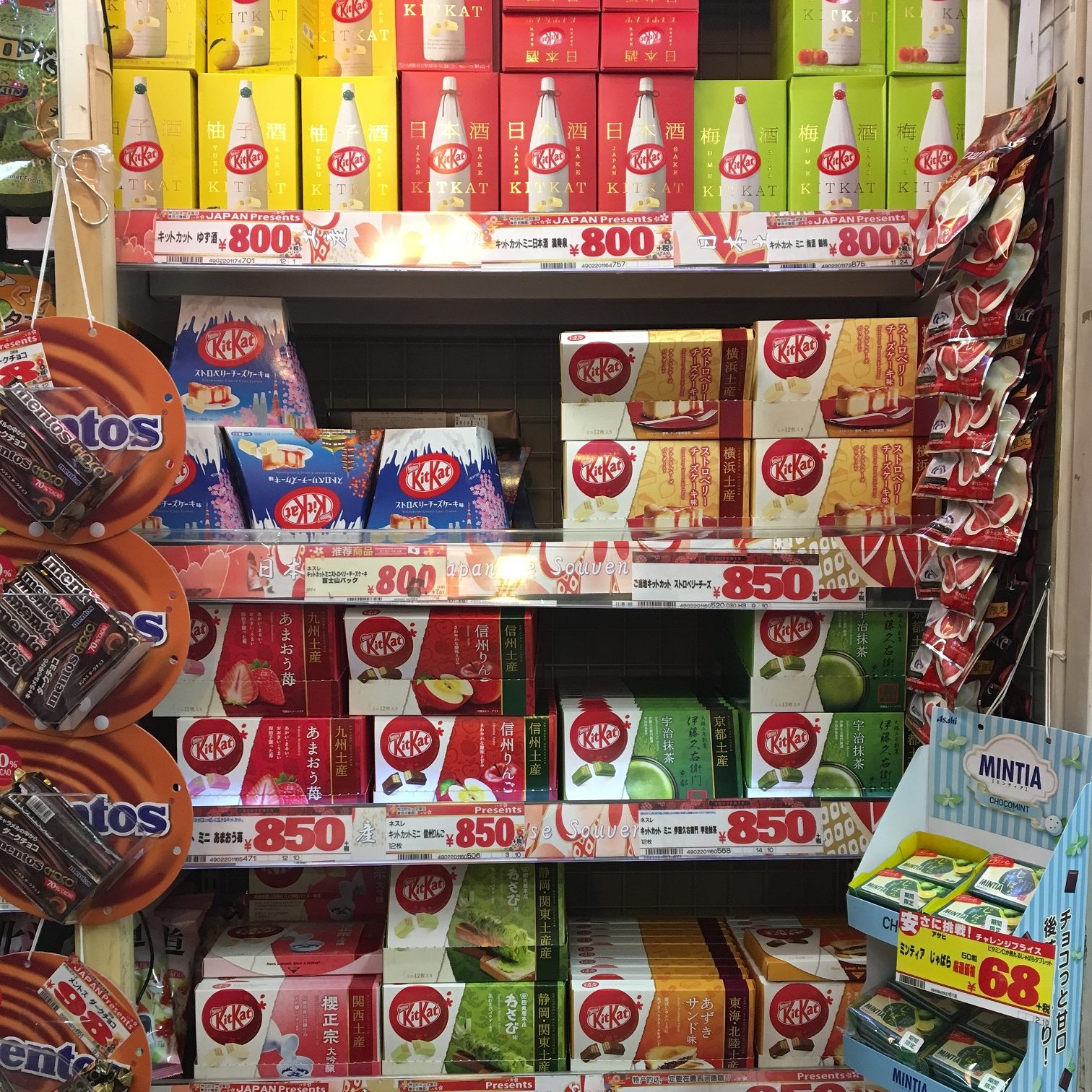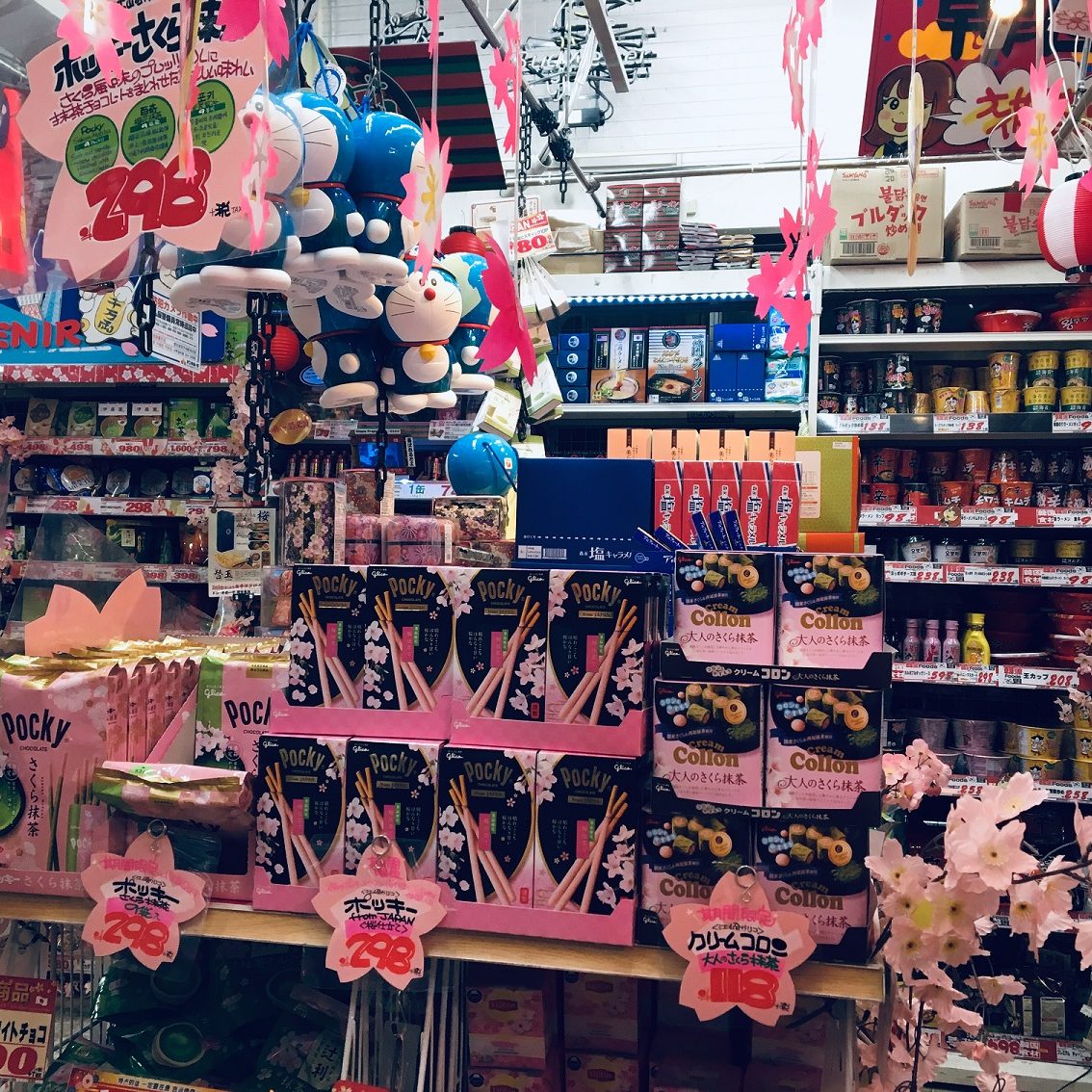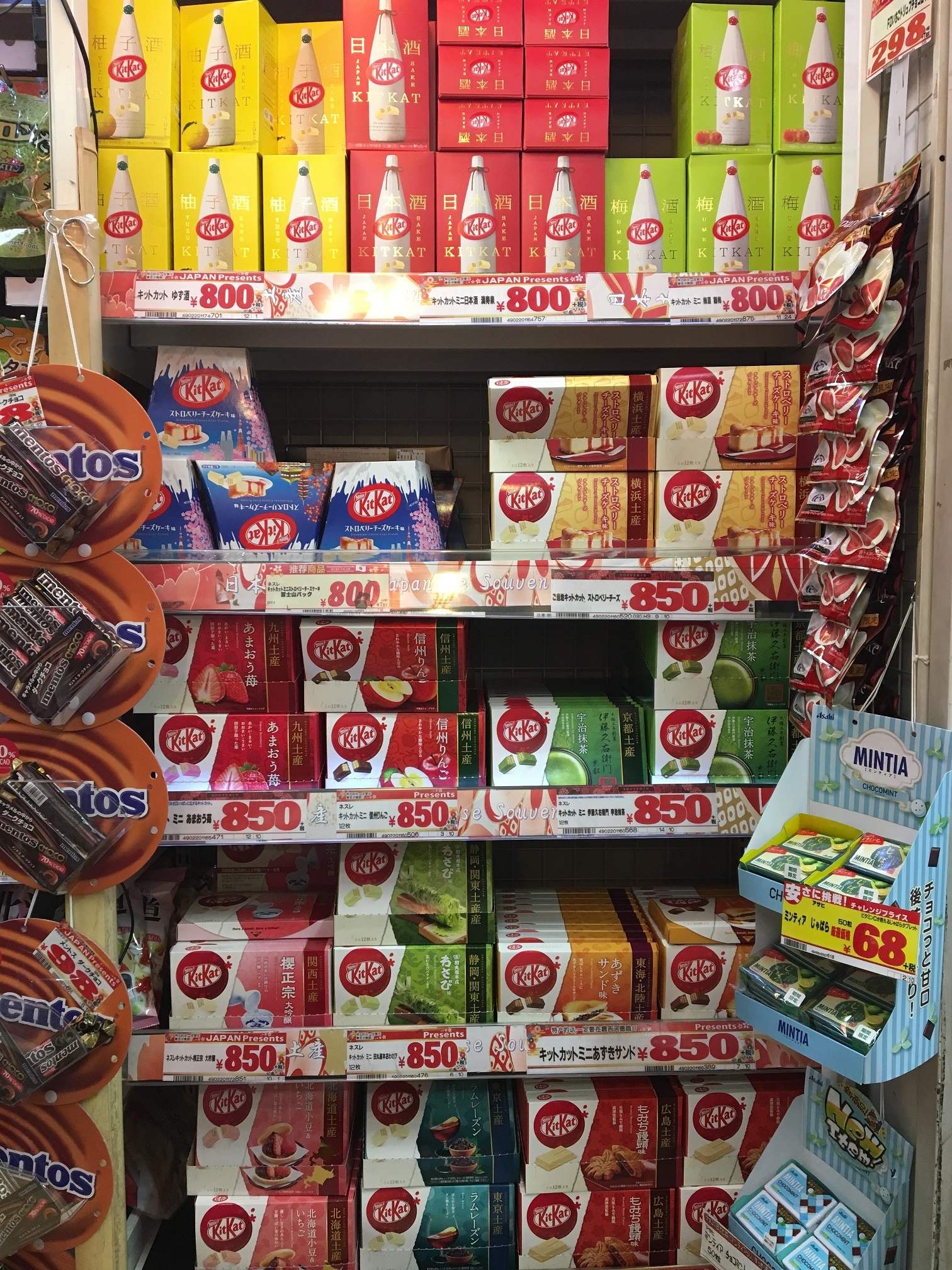Sweets – Selling The Perfect Taste
Second article in the series
By Mary Reisel
Aesthetics, size, colors, location, social class, age, money…. Which one is the most important when you want to promote your wonderful sweet spot in Japan?
The answer is – all! You can’t skip a single step of the ladder since in this culture – each one matters. Just like in design thinking, one step at a time.
Marketing sweets in Japan is successful when one understands well the Japanese preferences of flavor, the importance of location, appearance, and above all the purpose of buying and consuming the product. With a big market of different sweets and a major segregation of the local and foreign products, every small detail matters.
In the first article in the series Sweet January
, I focused on the difference between sweets and desserts, and the different history of sweets in Japan and on the Japanese menu. For business purposes, it’s useful to distinguish three main categories of sweets that are distinguished
by shape, brand image, social class, prices, accessibility, and above all – consumption style. The first is the traditional Japanese sweets and confectionary, the second is the foreign imported one, and the third is the local
glocalization of the two.
The first group of traditional Japanese sweets, known in the general term wagashi
, are made of rice flour and azuki beans paste. There are many variations of added fruits and sugar, added jelly made of kanten agar, and even cream, but the basic ingredients haven’t changed. Among this group one can find high class companies, like Toraya, that are proud of a history that extends as far as the 16th century. They are careful about the location of their shops (in high-class districts like Tokyo’s Ginza), the high prices, and the perfect appearance that changes with every season and reflects the symbols of Japanese culture and history: mount Fuji, golden fish, a red fallen leaf in the autumn that floats on jelly. Their products are hand made and are considered a special present for particular events or invitations.
The traditional Japanese sweets have a special place in culture thanks to their long and almost unchanged ingredients and preparation style. They were served during the tea ceremony and holidays, and their special design has to adapted to the seasons and the local symbol. In ancient Japan, small sweets were presents in Shinto shrines as gifts for the gods to make them happy and receive in return fruitful land, healthy rice, and hopefully no earthquakes. Later, they merged into local culture and were part of parties, ceremonies, and seasonal festivals as can be seen in historical drawings of cherry blossom festivals and celebrations. It’s interesting to mention that western sweet didn’t become a part of Japanese culture until the 20th century, at the middle of Meiji period.


The second group is foreign sweets, mostly imported in their original shape and taste, and sold according to price and brand that are usually on the high side of the market. In this group, one can find the famous chocolatiers, cakes and desserts, original cookies and national sweets of different countries. While most of them are original and keep their brand reputation and packaging, there are also several successful Japanese who studied with famous chocolatiers in Europe and returned to open their own chocolate shops and patisseries. They are careful though to offer the traditional French pastry in order to maintain the image of the “real thing”, but they add a few new products with local taste. The famous Japanese patissier, Sadaharu Aoki, reached fame and popularity by learning from the professional chefs in Paris and Switzerland, and he is famous for his unique adaptation of the French macaron to the specific flavor of the Japanese taste. While he is careful to follow the French pastries with traditional ingredients and baking style, he designs Japanese minimalistic aesthetics, and adds Japanese flavors like paste of azuki beans or asabi instead of heavy cream and chocolate. His green tea éclair with its sweet cream and a noticeable bitter taste of tea are a famous product with high popularity and a high brand image.
Entering into the market of high-class sweets and patisseries can also be fluent if one is connected to a famous character or story. For example, the famous French Macaron, that has become a steady-seller in Japan, was raised to fame since the popular movie on Marie Antoinette. If you can spot the next crazy fad of sweet from a movie – you made it! Ladurée has already a steady clientele and a set menu of macarons and sweets thanks to the popular queen, and the stead-sellers go well green tea of Japanese wagashi. Thus, the market of sweets never reaches a point of saturdation since the variations and blend of theses two sections of consumption keep adapting and innovating new blends and variations. However, keep in mind it is super-important to know your consumer first. Girls and women are a major segment of the population that enjoys a pleasant meeting over a drink and a sweet, be it cake, traditional dessert, or chocolate, but business people are a completely different population and consumption style, and for the Japanese New Year, people would rather buy traditional Japanese confectionary than western sweets which will usually find its place in Valentine’s Day. It’s important to be certain where people consume the product, when and in what occasion, and to what social class and population segment they belong.
Location is another important key factor in the success of marketing, promoting, and selling sweets in Japan. Train stations, youth culture zones, high-class business areas, each one has its own unique style of food and special sweets that are typical for the area. This goes to the entire Japanese islands, specific areas of Japan have unique forms of consumption of sweets and their own traditional confectionary of which they are proud. Therefore, it is vital to understand the map and the meaning of the space before deciding what to sell and how to sell it.
The third group tends to fall into the daily casual sweets, and this is the group of western cheap sweets produced by Japanese companies, such as the Meiji boxes of almonds covered in chocolates, and the famous Pocky series that has become a popular steady-seller. The most conspicuous thing about this group is the high quality and perfectly designed packaging that go high above their cheap prices and selling point in convini shops and supermarkets. Aesthetics and shape are of utmost importance and exceed money in Japan, one should never forget that. Never skip a good market research and a deep analysis of sense perception and taste preferences of your target consumers. Shape, color, taste, and being in harmony are the most important factors. When entering the Japanese world of sweets, always think beauty and harmony first.
© Mary Reisel, 2021, Tokyo, All Rights Reserved




No responses yet